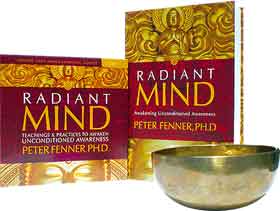In nondual transmission we find useful to view experiences as constructions. Buddhism says our empirical experiences are compounded or constructed. When we view our experiences as constructions it gives us a handle on them. It lets us deconstruct or dismantle them and release the energy from attraction and aversion. We are no longer captivated by the construction and can see through the construction, thus releasing us from a limiting view of reality. If we can see how an experience is put together, we can take it apart.
Take anxiety for example. When you are engrossed in the idea that you’re feeling anxious because you’re in a new relationship, you might think, “I feel uncomfortable, is this the right or wrong thing to be doing?” Your experience becomes narrow and crystallized around this. Energy is being tied up in this construction, in being anxious. If we can dismantle the core construction to find/not find the ‘me’ that is anxious, and see the ‘me’ feeling anxious as a construction, we can dismantle that. As we notice no clear person is available to feel anxious, the feeling and its texture begins to dissolve. More is available in the experiential field, energy is released with the removal of aversion because normally anxiety is something we want to be rid of and try to push away. In addition, there is a release of worrying about the future, and a release of the energy that is involved with that feeling. You may have the sense, “I’m no longer involved in myself, I’m no longer tied up with what is happening with me. I’m free and am no longer stuck in a pattern, a complex or reactive response.” We will go into the skill of nondual inquiry and deconstruction later on in this Manual.
Often I’ll engage in a conversation that begins like this, “Okay, you say that’s what you are experiencing. I acknowledge that. But for a moment let’s view it as a construction, as something that’s assembled. What I hear you saying is that right now you are confused and wondering what is happening here. Can we look at that as a construction?” If the student says yes, we can begin to look at “what is it to be confused?” “What or where is here?” and perhaps even “who are you?”
The above article is an excerpt from Natural Awakening: An Advanced Guide to Sharing Nondual Awareness



